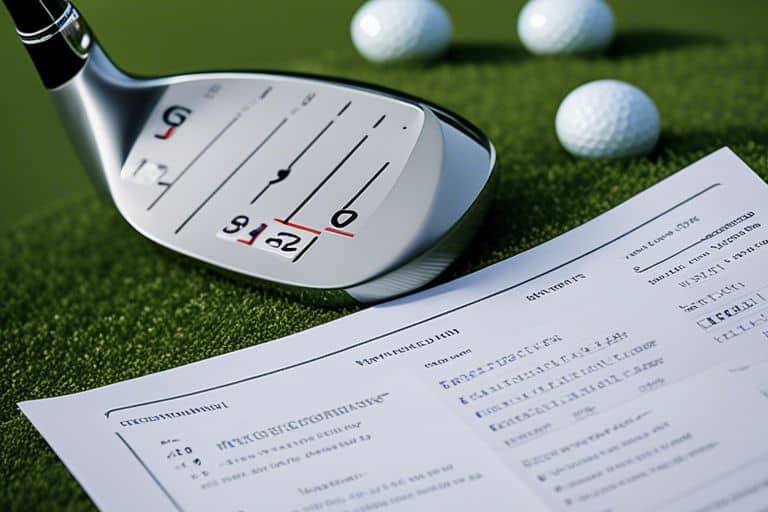How do you calculate your greens in regulation (GIR) percentage in golf?
Excruciatingly important yet often overlooked, calculating your greens in regulation (GIR) percentage in golf is a vital metric for understanding your performance on the course. Fortunately, it is a relatively simple calculation that can provide valuable insights into your game and help you identify areas for improvement. Today, I will guide you through the process of determining your GIR percentage and explain why it is such a crucial statistic in the game of golf.
Fundamentals of Greens in Regulation
By understanding the fundamentals of Greens in Regulation (GIR), you can improve your overall performance on the golf course. Achieving a high GIR percentage is a key indicator of a player’s consistency and accuracy with approach shots. In this chapter, I will delve into the definition of GIR and the key factors that influence this important statistic.
Definition of a Green in Regulation
A Green in Regulation (GIR) refers to hitting the ball onto the putting surface in the regulation number of strokes or less on a par 3, par 4, or par 5 hole. This means that for a par 3, the ball must be on the green after one stroke; for a par 4, after two strokes; and for a par 5, after three strokes. Achieving a GIR gives you the opportunity to make a birdie or par putt, increasing your chances of scoring well on the hole.
Key Factors Influencing GIR
There are several key factors that influence a player’s ability to achieve a high GIR percentage. These factors include accuracy off the tee, distance control with approach shots, and green-reading and putting skills. Accuracy off the tee is crucial as it sets up the approach shot to the green. Furthermore, having the ability to control the distance of approach shots is essential for giving yourself a good chance at hitting the green in regulation. Additionally, strong green-reading and putting skills are necessary to convert GIR opportunities into birdies or pars. The better you are at these skills, the higher your GIR percentage will be. The consistency of these skills is also a key factor influencing GIR. The more consistent I am at executing accurate tee shots, precise approach shots, and converting putts, the higher my GIR percentage will be.

Step-by-Step Calculation of GIR Percentage
Any golfer can calculate their greens in regulation (GIR) percentage by following a simple formula. The formula is: GIR / (Number of Holes Played – Number of Par 3 Holes) x 100 = GIR Percentage. Let me break it down for you:
| GIR | The number of holes where you reach the green in the regulation (i.e., the number of strokes allowed based on par). |
| Number of Holes Played | The total number of holes you played in a round of golf. |
| Number of Par 3 Holes | The number of par 3 holes in the course you played. |
Recording Your Greens in Regulation
To calculate your GIR percentage, you first need to keep track of the number of greens you hit in regulation during a round. This means counting the number of times you reach the green in the number of strokes allowed based on par. It is essential to pay close attention to this while on the course, as accuracy is crucial in determining your GIR percentage.
Formula for Calculating GIR Percentage
After recording your GIR for a round, you can use the formula mentioned above to find out your GIR percentage. By dividing the number of greens in regulation by the total number of holes played minus the number of par 3 holes, you’ll get your GIR percentage. This percentage is a valuable metric that provides insight into your performance on the course and can help you identify areas for improvement in your game.
Strategies to Improve Your GIR Percentage
Now that we understand the significance of Greens in Regulation (GIR) and how to calculate it, let’s delve into some effective strategies to improve your GIR percentage on the golf course. By taking a strategic approach and implementing the right techniques, you can significantly enhance your performance and make progress towards lowering your scores.
Analyzing Your Approach Shots
When it comes to improving your GIR percentage, analyzing your approach shots is crucial. By carefully evaluating your past rounds, you can identify patterns and areas for improvement. Focus on the distance and accuracy of your approach shots to the green. Pay close attention to your club selection and the direction of your shots. By pinpointing your strengths and weaknesses, you can make targeted improvements to your approach game and increase your GIR percentage.
Golf Swing Tips and Course Management
Improving your GIR percentage also involves refining your golf swing and honing your course management skills. Work on developing a consistent and reliable swing that allows you to control the trajectory and distance of your shots. Additionally, consider how you approach each hole and the course as a whole. Utilize strategic course management to position yourself for high-percentage approach shots. This may involve playing more conservatively off the tee or selecting the right target areas on the fairway.
Maximize your chances of hitting the green in regulation by adopting a methodical and strategic approach to course management. Throughout your round, consistently assess and adjust your strategy based on the course conditions and your performance. Implementing these practical tips can drastically improve your GIR percentage and lead to lower scores on the scorecard.
- Develop a consistent and reliable golf swing
- Utilize strategic course management techniques
- Assess and adjust your strategy based on course conditions
Though improving your GIR percentage requires diligence and practice, the payoff is well worth the effort. By focusing on strategic analysis of your approach shots and refining your golf swing and course management, you can make positive strides towards increasing your GIR percentage and improving your overall performance on the golf course.

Tracking and Analyzing Your Progress
However, simply knowing your greens in regulation (GIR) percentage isn’t enough to improve your golf game. To truly see growth and identify areas for improvement, it’s crucial to track and analyze your progress over time. This will give you a clearer picture of your strengths and weaknesses on the course, ultimately helping you make more informed decisions about your game.
Tools for Monitoring GIR Statistics
When it comes to monitoring your greens in regulation statistics, there are several tools and resources you can use to track your progress. Utilizing a golf scorecard or a golf GPS app can help you keep track of your GIR percentage during each round.
Additionally, there are specific golf stat tracking apps that can provide in-depth analysis of your performance, including your GIR stats. These tools can be invaluable in helping you identify patterns and trends in your game, ultimately allowing you to make strategic adjustments to improve your GIR percentage.
Interpreting Your Data for Better Performance
Once you have gathered and analyzed your GIR statistics, the next step is to interpret the data in order to improve your performance. Look for trends in your GIR percentage across different clubs and distances. Are there specific clubs or distances where you consistently struggle to hit the green in regulation? Identify these patterns and use them to tailor your practice sessions. Additionally, pay attention to how your GIR percentage correlates with your overall score. Improving your GIR percentage can have a significant positive impact on your overall performance, so it’s important to prioritize this aspect of your game.

Conclusion
Ultimately, calculating your greens in regulation (GIR) percentage in golf is a straightforward process that can provide valuable insight into your performance on the course. By simply dividing the number of greens hit in regulation by the total number of holes played, you can determine your GIR percentage. This statistic is a useful tool for analyzing your ball-striking ability and tracking your progress over time. By regularly calculating and monitoring your GIR percentage, you can identify areas for improvement and set goals to elevate your game.






